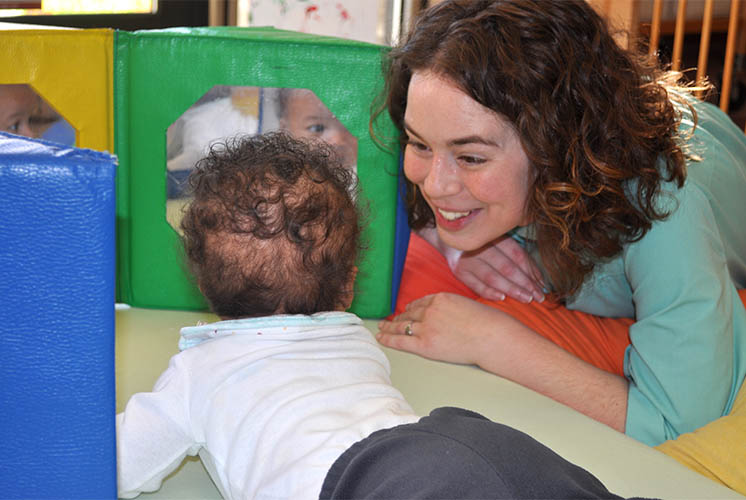 One online dictionary1 gives the following definitions for observation (noun):
One online dictionary1 gives the following definitions for observation (noun):
- An act or instance of noticing or perceiving
- An act or instance of regarding attentively or watching
- The faculty or habit of observing or noticing
- The information or record secured by such an act
According to Head Start Program Performance Standard (HSPPS) 45 CFR §1302.33(b)(2), "a program must regularly use information from paragraph (b)(1) of this section along with informal teacher observations and additional information from family and staff, as relevant, to determine a child's strengths and needs, inform and adjust strategies to better support individualized learning and improve teaching practices in center-based and family child care settings, and improve home visit strategies in home-based models."
Observing children is a necessary part of what teachers, home visitors, and family child care providers in Early Head Start (EHS) and Migrant and Seasonal Head Start (MSHS) programs do daily. However, there is more to observing than just watching what children do, as a toddler teacher describes here:
Johnny was a red-headed 2-year-old who could empty a shelf of toys faster than any child I've ever known. I would spend the days he came to child care racing around after him, trying to keep some semblance of order. Around this time, I had to take a course on observing as part of my studies at [school]. I was upset. I knew how to watch children. I could see what they were doing. After about two months, it dawned on me: Observing wasn't about just what children do. It was watching them from the outside with the purpose of trying to understand what they are feeling and experiencing on the inside. This revelation helped me get to know Johnny.2
If observation is more than just watching children, how might it be defined? This teacher's story contains an important point; observing children also involves focus and purpose. Stetson, Jablon, and Dombro (2009) defined observation as, "watching and listening to learn about individual children."3 Education staff watch and listen to children and families to learn about each child's development and to figure out what and how each child is learning. Observation can also be described as paying close attention to a child's behaviors, interactions, activities, and interests, and noticing all aspects of the child's development.4 Both definitions stress the importance of observing with intention and observing to learn about a child.
1“Observation,” Dictionary.com, accessed February 19, 2019, http://dictionary.reference.com/browse/observation?&qsrc=.
2Judy Jablon, Amy L. Dombro, and Margo L. Dichtelmiller, The Power of Observation for Birth Through Eight, 2nd ed. (Teaching Strategies and National Association for the Education of Young Children, 2007), 3.
3Charlotte Stetson, Judy Jablon, and Amy L. Dombro, Observation: The Key to Responsive Teaching Workbook with DVD (Washington, DC: Teaching Strategies, 2009), 1.
4National Infant & Toddler Child Care Initiative, Infant/Toddler Curriculum & Individualization (Washington, DC: U.S. Department of Health and Human Services, 2010), 19.
Read more:
Resource Type: Article
National Centers: Early Childhood Development, Teaching and Learning
Last Updated: November 13, 2019
